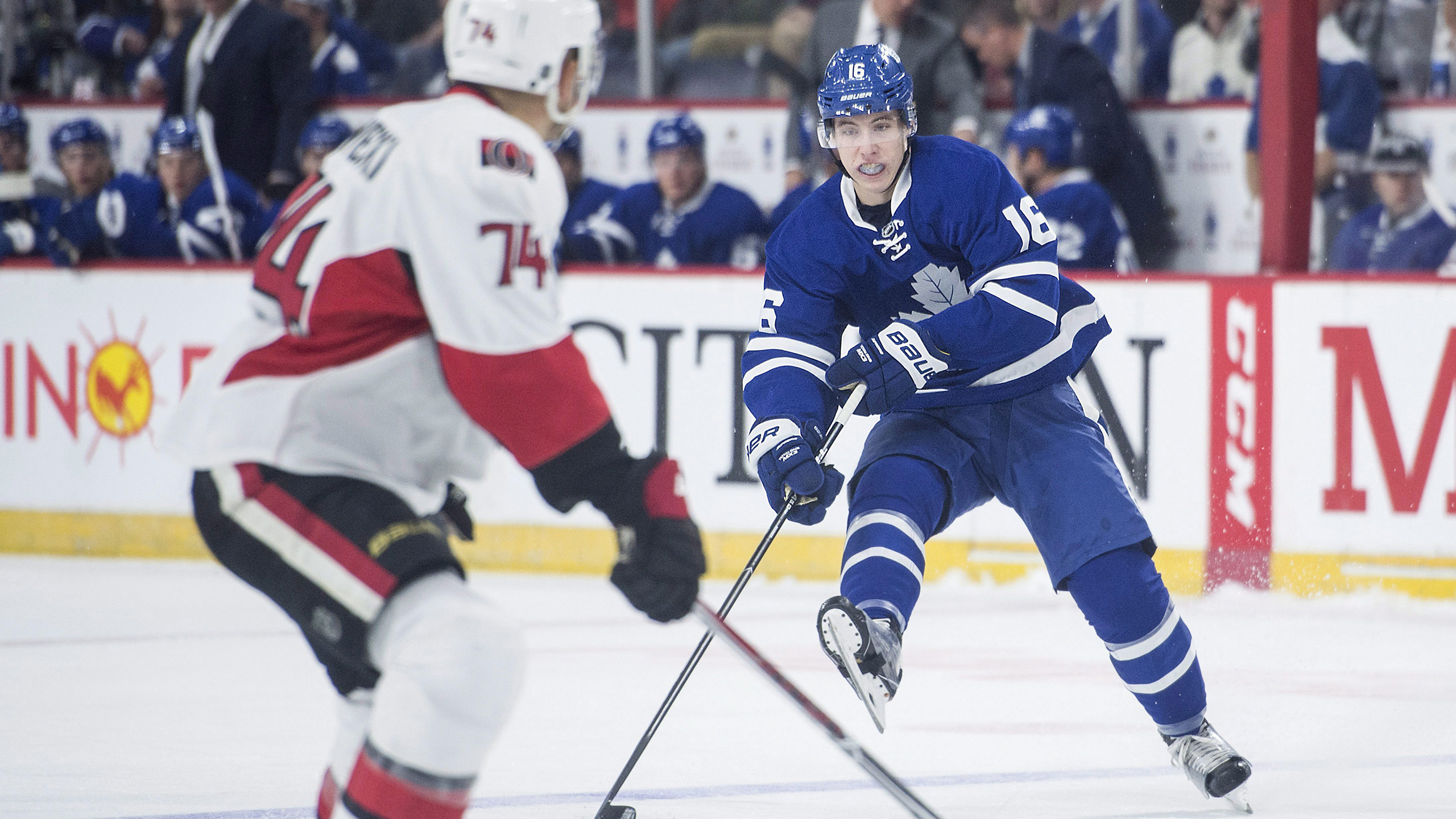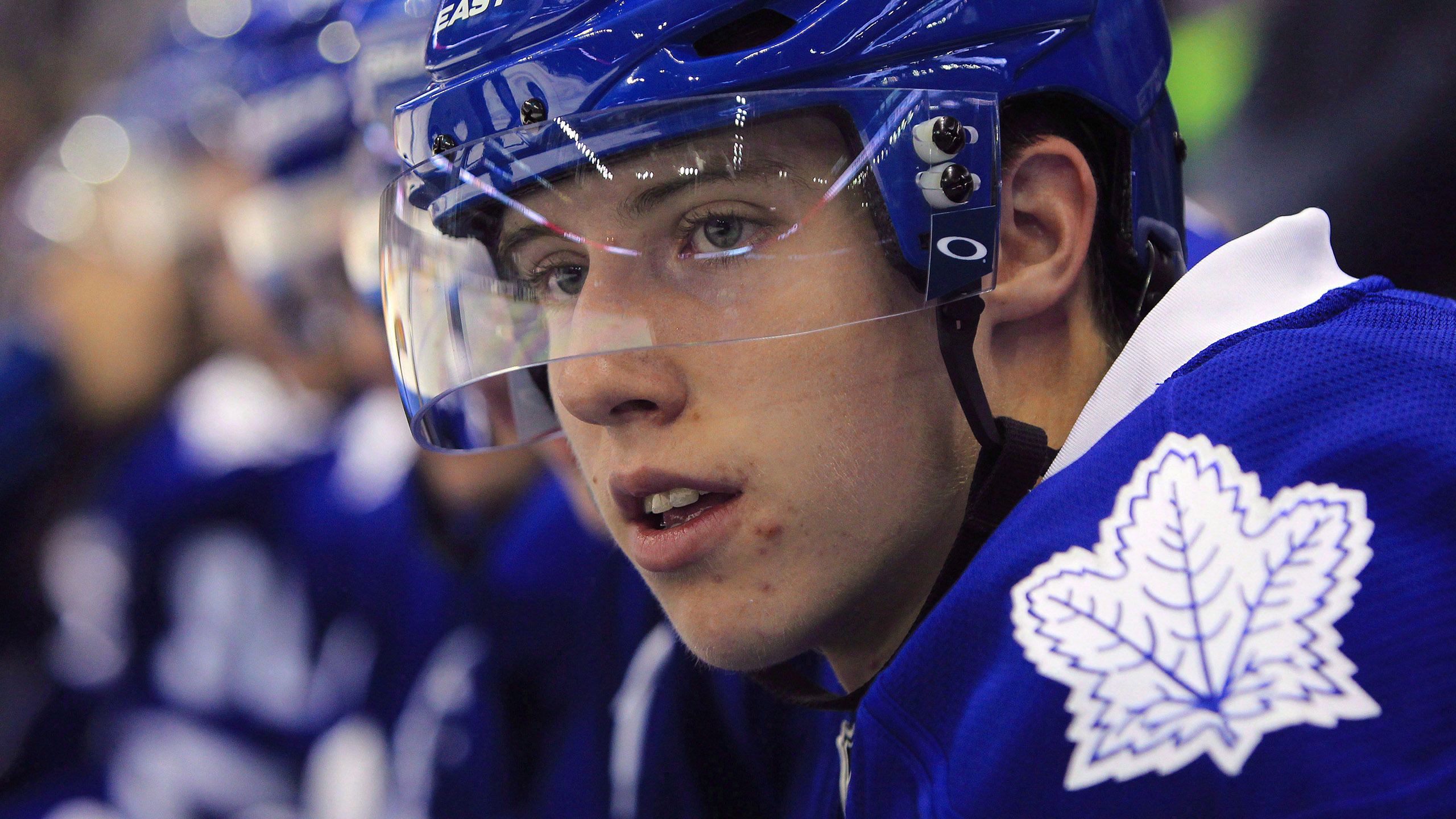When Marner returned to the Knights, he scored 29 points in his next 10 games—13 goals and 16 assists. He had four hat tricks and two five-point games in November. He went on to finish second in Ontario Hockey League scoring with 126 points in 62 games. Strome led the league with 129 points in 68 games, while McDavid had 120 in 47 games.
The Marner family flew to Miami for the 2015 NHL Draft with the hope that the Toronto Maple Leafs would select Marner. The team’s interim GM, Mark Hunter, had chosen Marner for the Knights with the last pick of the first round in the 2013 OHL draft. Privately, the family worried that Arizona would take Marner with the third pick, after McDavid and Jack Eichel were selected first and second. When Strome’s name was called third, there was a loud cheer from a section of the crowd where family and friends of the Marners were seated. They knew then, before his name was even called, that Marner was coming home.
A season later, expectations had grown exponentially. London Knights highlights showcasing his playmaking ability became required viewing for Leafs fans eager for something to cheer about. With 116 points in 57 games, he was named the OHL’s most outstanding player.
On May 5, Marner’s 19th birthday, he notched a goal and an assist, helping the Knights win the first game of the league final over the Niagara Ice Dogs. After the game, Bonnie and Paul waited outside the locker room. When their son emerged, they told him that just a few hours earlier a fire had engulfed the family home in Thornhill, Ont. They had been informed while en route to London for the game. Video of the blaze was already online and had made the local news.
Marner’s first question was about the pets. Burbank and Winston had been rescued, but the damage to the home wasn’t fully known. The Marners had taped every one of their son’s games when he was growing up, often poring over the footage afterwards looking for ways he could improve. There were photographs and medals, Team Canada sweaters. All of it could be gone forever. Marner hugged his parents tight, shocked by the news. He managed to crack a baffled smile while watching the footage on his mother’s phone. It was devastating. But everyone who mattered was safe.
A short time later, dressed in a shirt and bowtie under a blue suit, Marner walked into the lobby at Budweiser Gardens, where a row of fans waited for him. He signed autographs and smiled for a few photos then walked over to where his family, his billets and a few other friends waited for him. He gave out several hugs, as he is prone to do, and gave a second to his mother.
The Knights went on to sweep Niagara and win the OHL championship, with Marner winning the award for most valuable player in the playoffs, scoring 44 points in 18 games. Marner was named the CHL Player of the Year a day before the Knights beat the Rouyn-Noranda Huskies 3–2 in overtime to win a thrilling Memorial Cup Final, giving London its second national championship in franchise history. Marner had an assist in the win, extending his playoff point streak to 20 games. He had 14 points in four Memorial Cup games, and was awarded the Stafford Smythe Trophy as tournament MVP.
The hardware spoke for itself. Heading into the biggest off-season of his life, Marner had just accomplished pretty much all a player can in junior hockey, size be damned.




